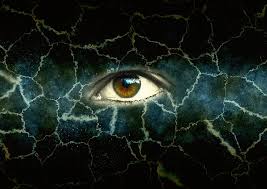Things are crazy right now for me, working with my editor and setting up a new computer — all these foreign keys make me feel like I’ve never used a computer before — but I didn’t want to leave you flat. Hearing my tales of woe, friend and fellow writer Craig Boyack sprang into action. Some of you are familiar with his site Entertaining Stories, where he shares some of the best short stories and flash fiction I’ve ever read, along with various other topics. If you get a chance stop by and say hello. While you’re there browse his Idea Mill — great fodder for creativity.
All yours, Craig!
When Sue asked me if I’d do a guest post I was ecstatic. Then it dawned on me that many of her readers are probably crime writers. I write speculative fiction; what the heck can I bring to crime writers?
Crime happens in speculative fiction too. It’s mostly in paranormal and science fiction, but fantasy isn’t immune. We tend to gloss over it, and build worlds that get more focus.
Then it dawned on me, writer is also part of the title. I can talk about writing. I tend to see things a bit differently than most, so I do things differently too. I’m going to mention some of them in this post.
I’m an unashamed outliner. I like three act structure, but I use a storyboard for my outline. There are index cards for the beginning and end of each act, the rest get filled in as I brainstorm my story. I like this method, because I can add photos, maps, sticky notes and all kinds of things. It’s possible to get pretty elaborate with projected word count, plants and payoffs, pinch points, and more.
I don’t always get that elaborate, but I like the method. A different writer might adopt the heroes journey, or fairy tale structure to a storyboard. To tell the truth, I snipe from these all the time too.
I don’t use a physical storyboard. Turns out there’s an app for that. I can take my storyboard with me on my iPad.
I also use direct feeds like my RSS reader and something called Zite Magazine. These work by subscribing to content I like and the Internet sends me data. A writer has to get ideas from somewhere. Many of my coolest story elements came to me this way.
Zite is particularly fun, because it’s smart. When I first subscribe to a category, it sends me everything it can find. As an example, when I set up a category called “voodoo” I got articles about doughnuts, beer, Jimmy Hendrix, and more. Zite lets me give articles a thumb up or down. It corrects over time and now it’s all about mojo hands and dolls with pins.
I’m sure an enterprising crime writer could do something similar. When I get enough fun ones, I post something I call The Idea Mill. My blog followers seem to really enjoy those posts. I have enough right now for the next one.
The last thing I’ll mention is living documents. I keep living documents for various reasons. Writing advice is everywhere today, and it all gets a bit repetitive. Sometimes there is a real gem posted. When I get these, the data gets summarized in my living documents. My memory isn’t what it used to be.
I keep documents about editing, writing tips, cryptids, and fantasy. There are very brief notes about the villain’s journey, Pixar secrets, and the tidbits that help me in my projects. Most of these are helpful on the editing passes. I have a whole page on suspense tips.
Sue has something similar called “50 ways to murder your fictional character.” If she were to add to it on occasion, it would be a living document. (Note from Sue: I’ve been adding. I’ll send an update once there’s enough new information to make it worthwhile.)
I hope I’ve provided at least one nugget you can take home with you today. Looking at things differently might help you create a major hit one day.
I would be remiss if I didn’t mention that I have book I’m promoting right now. That’s part and parcel for guest posts. It’s called Will O’ the Wisp, and I think it’s my best so far. Here’s a little blurb:
There is something evil up Bergamot Holler, and it’s been targeting the Hall family for generations.
Patty Hall is fifteen years old. She loves stargazing, science fiction, and all things related to space exploration. This leaves her perfectly prepared for the wrong problem.
Patty is afraid her mother will send her to a care facility if she tells her what she’s seen. If she doesn’t figure things out soon, she’s going to join her father in the Hall family cemetery plot.
Patty has to come to grips with her own physical handicap, survive the wilderness, and face an ancient evil all alone if she’s going to survive.
Will O’ the Wisp is suitable for young adults. It involves strong elements of suspense, and is set in the mid 1970s.
Here are the Amazon links:
Northern American Continent http://a-fwd.com/asin-com=B00UPH6BNS
Rest of the world http://a-fwd.com/asin-com=B00UQNDT2C
Thank you, Sue, for having me over today. It’s a real pleasure.
No man ever wetted clay and then left it, as if there would be bricks by chance and fortune. – Plutarch














